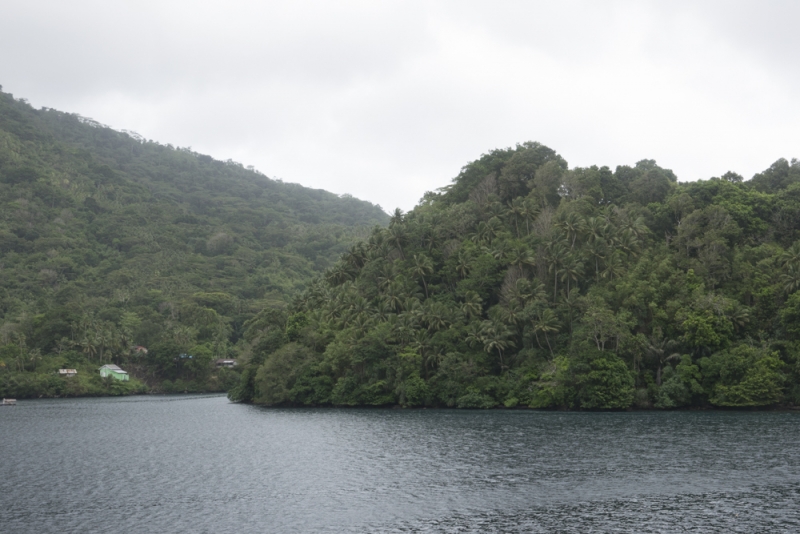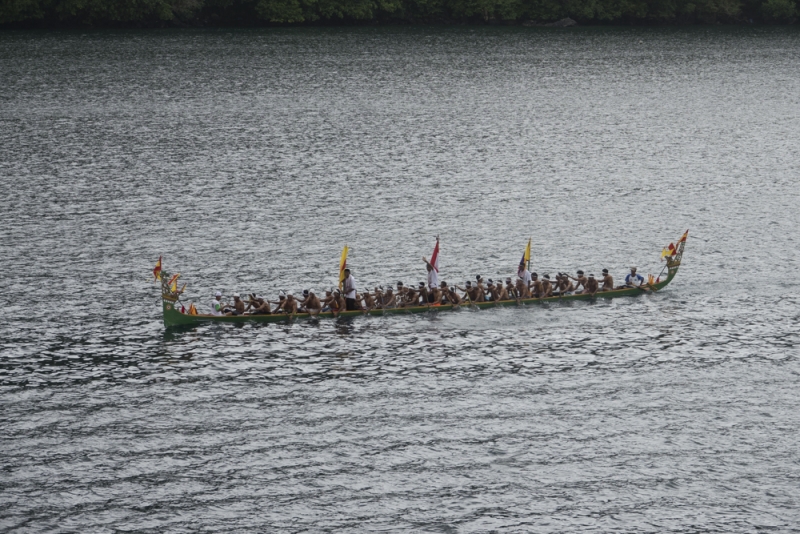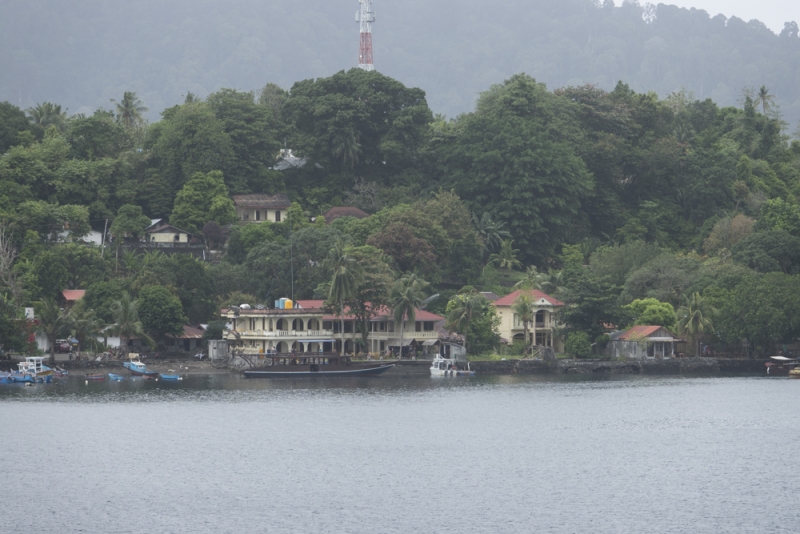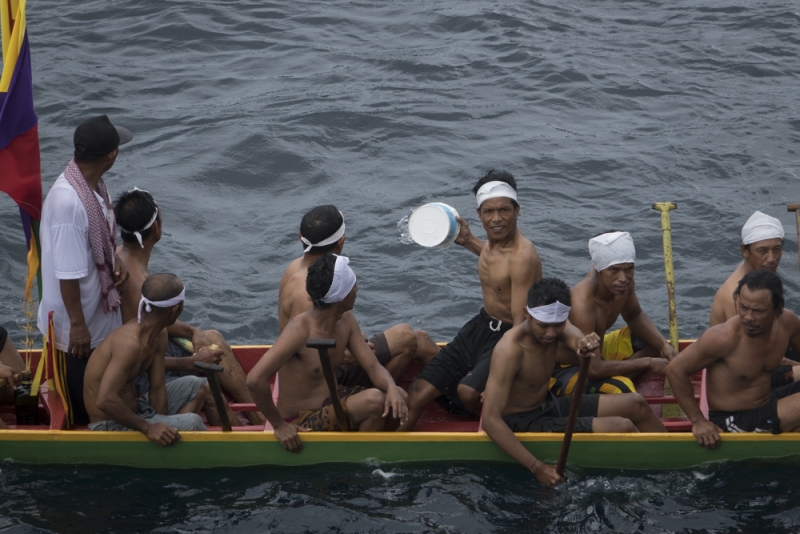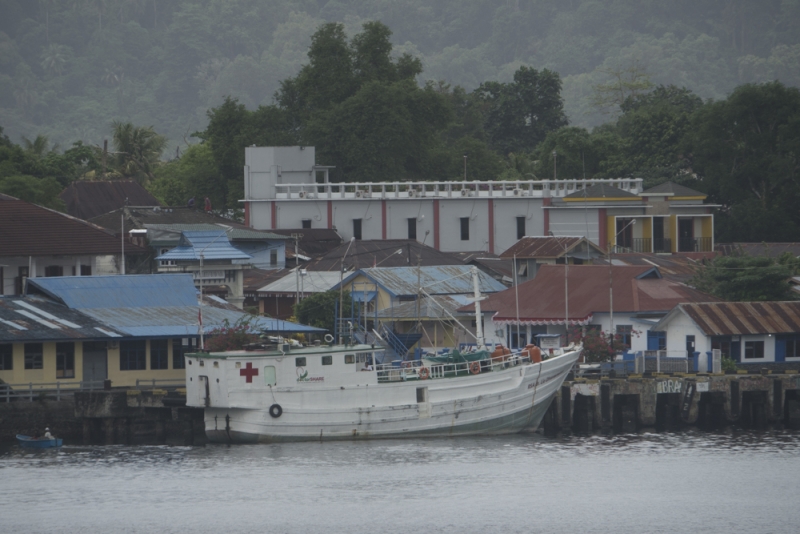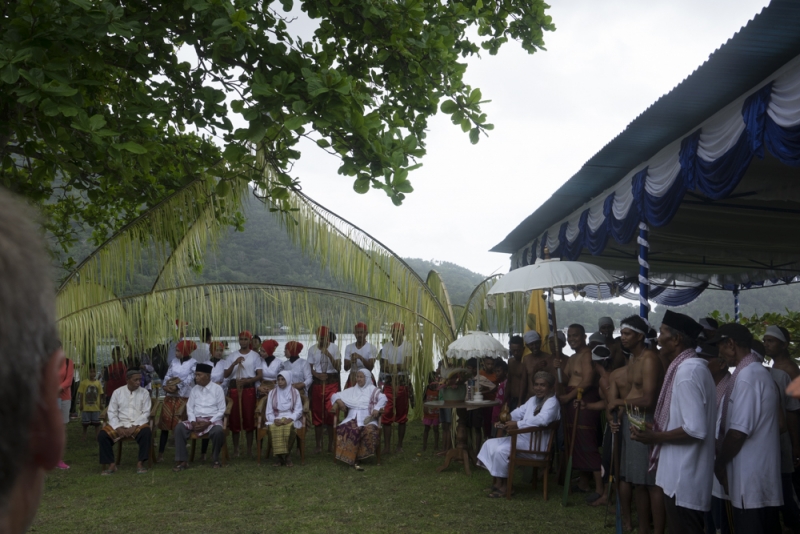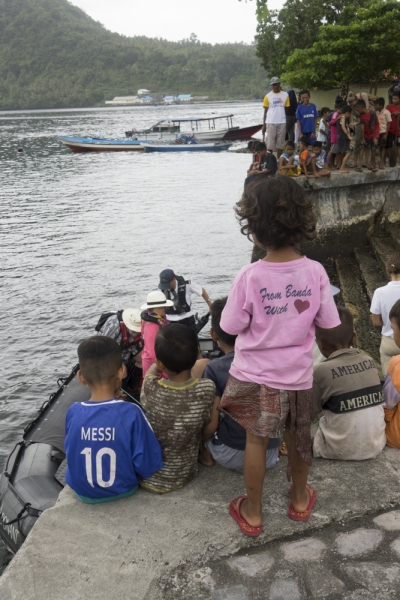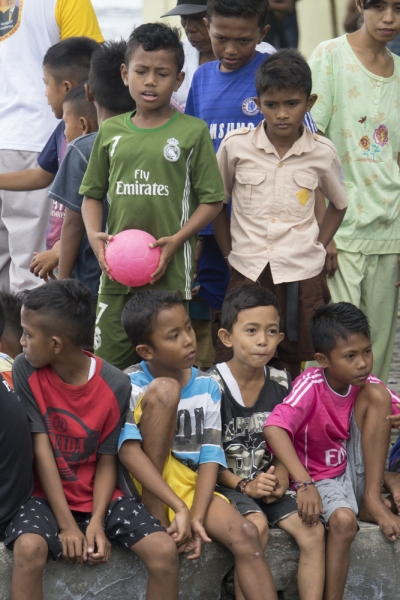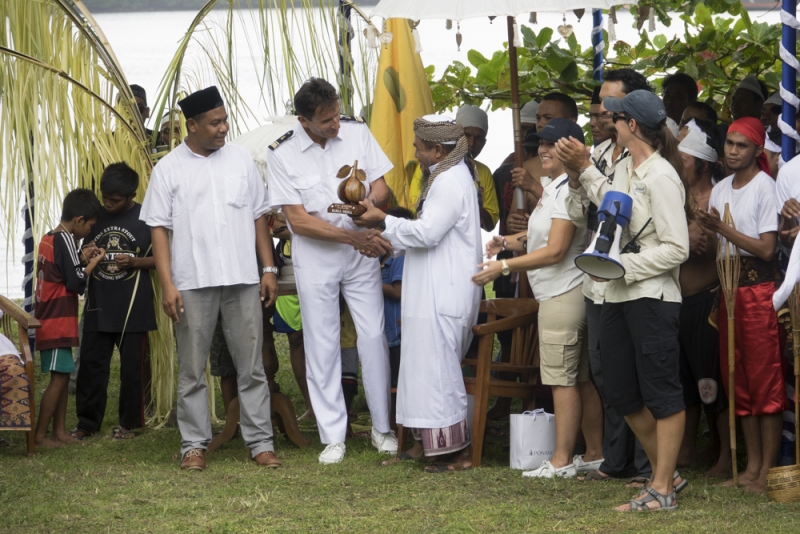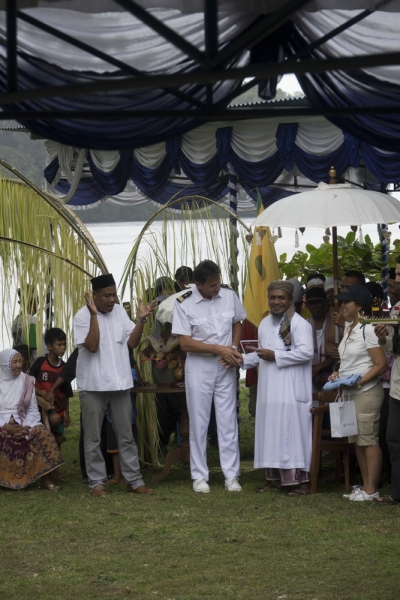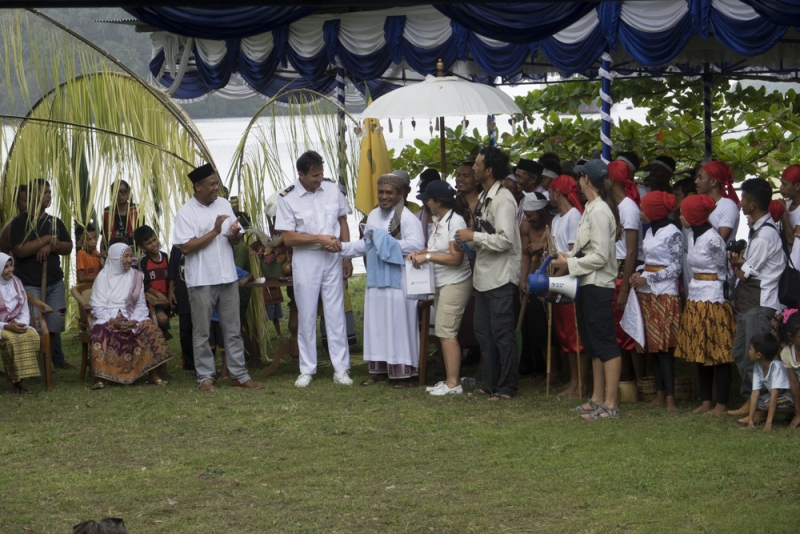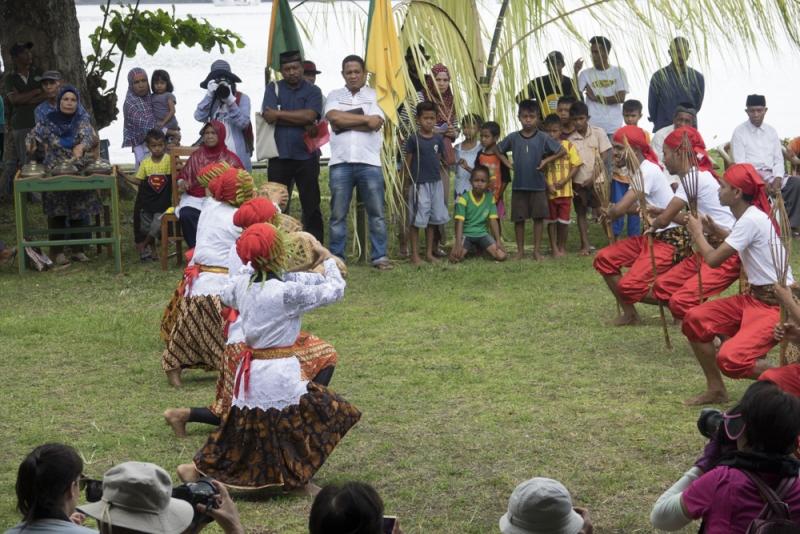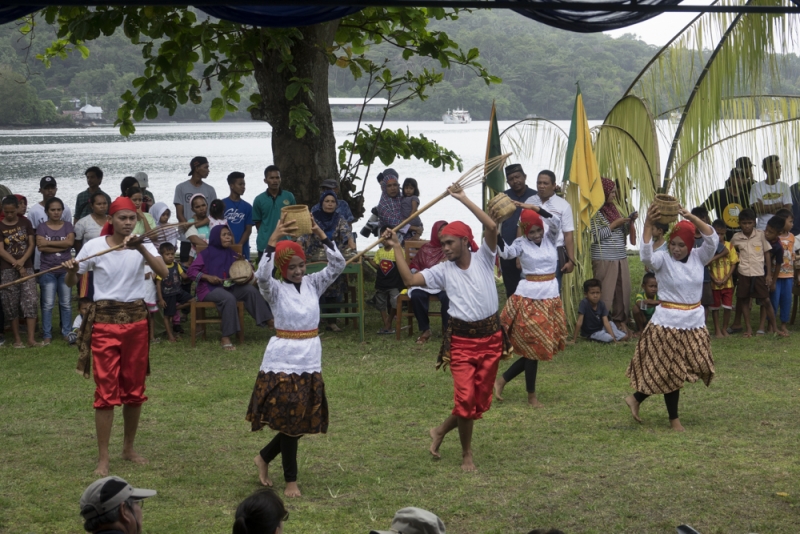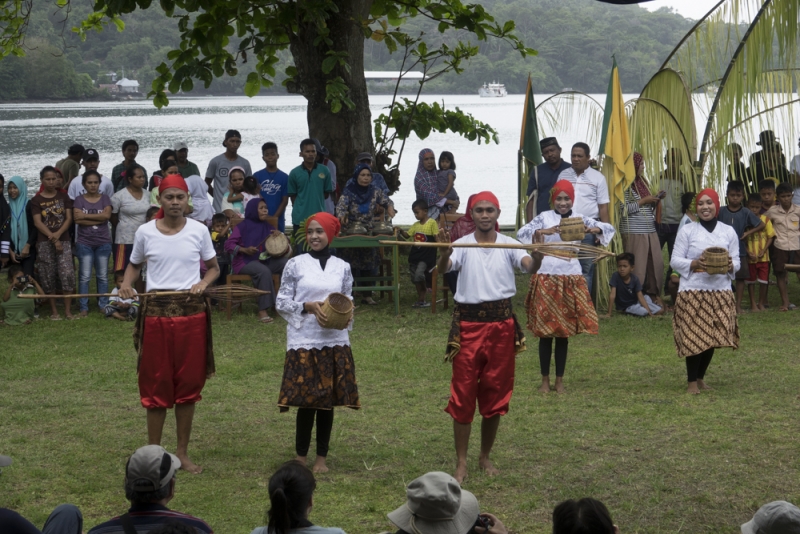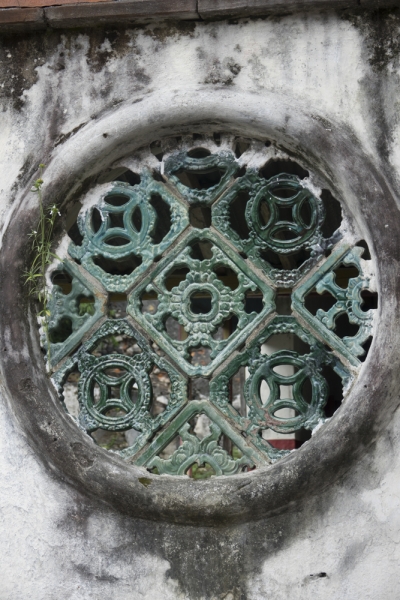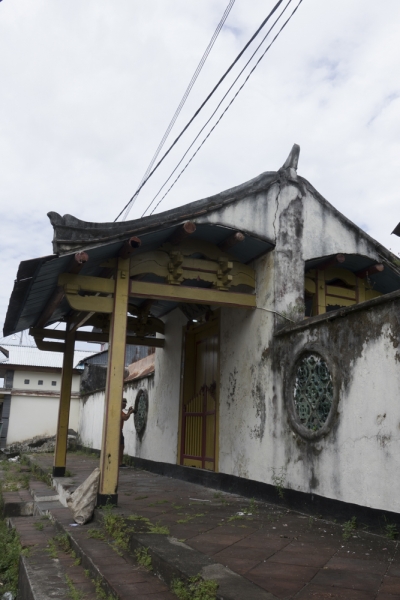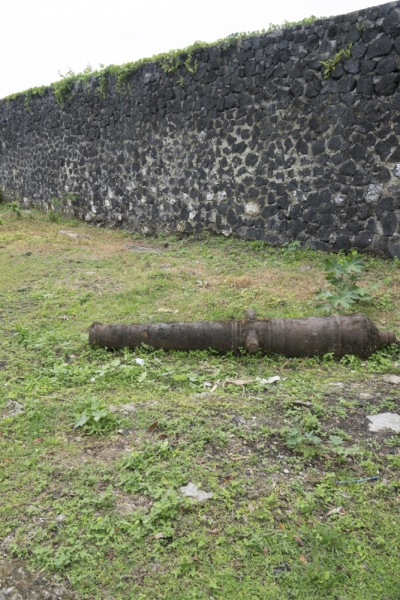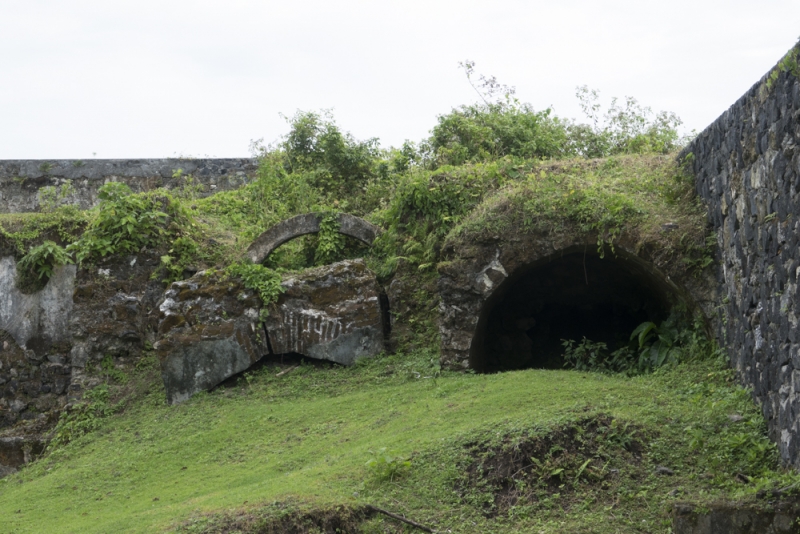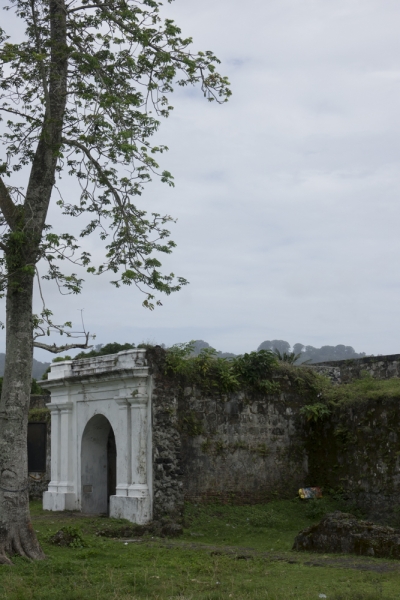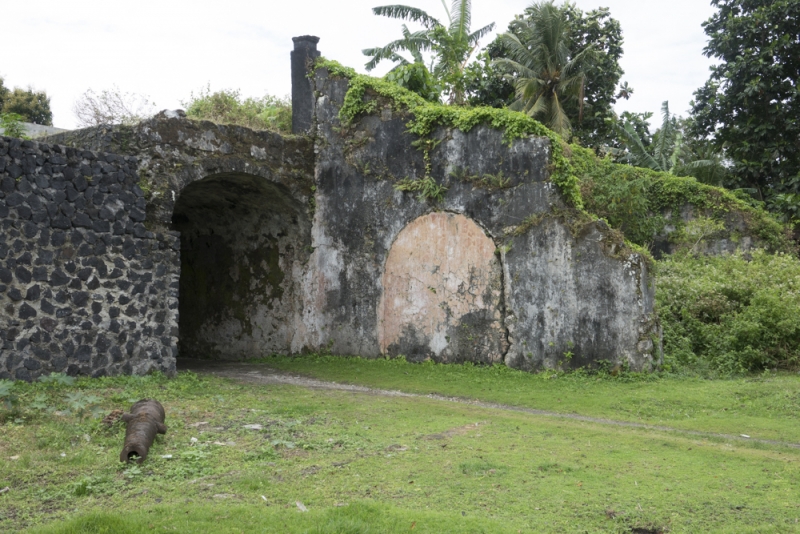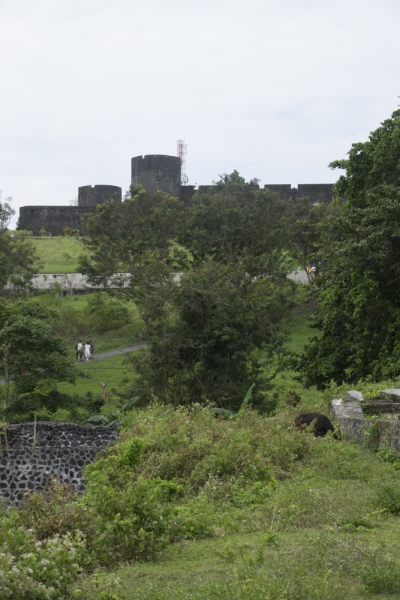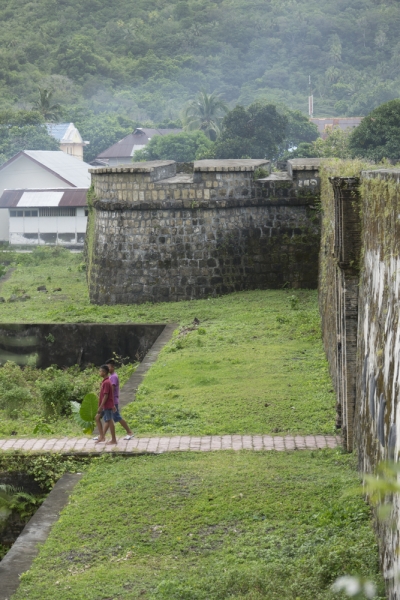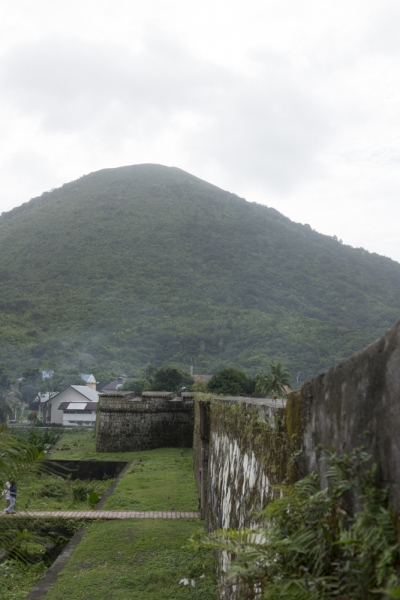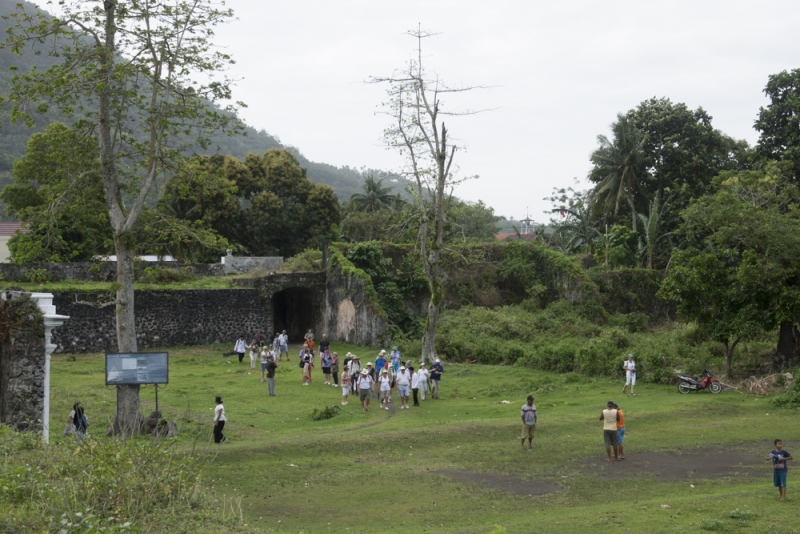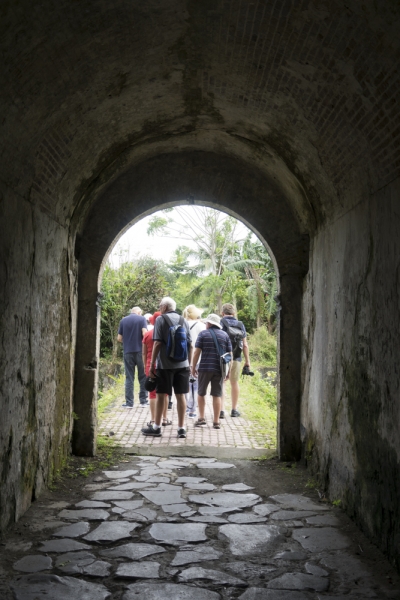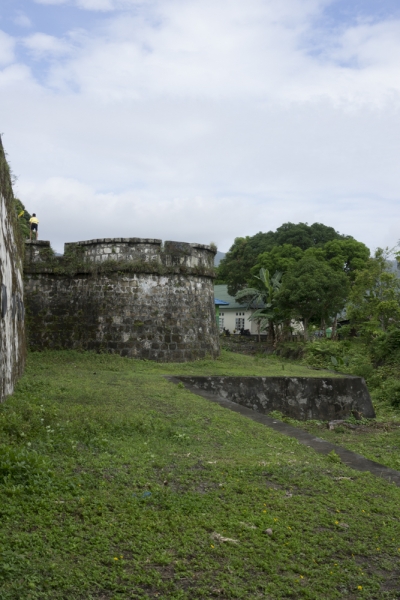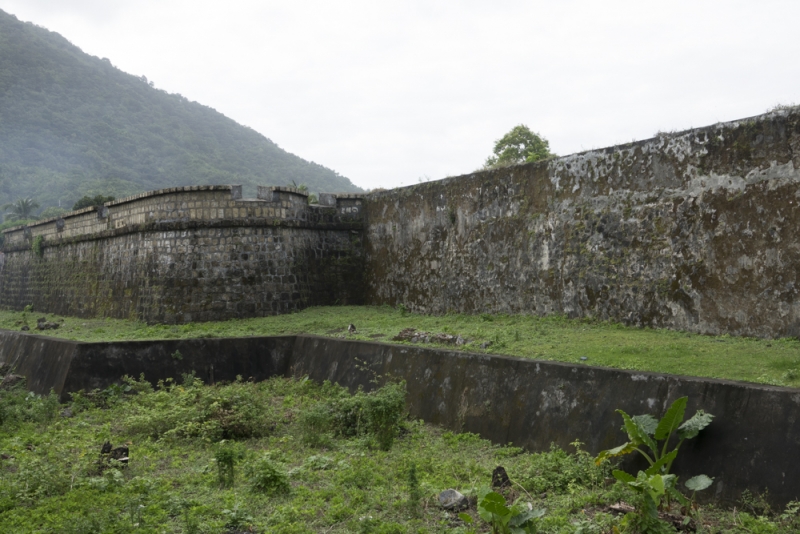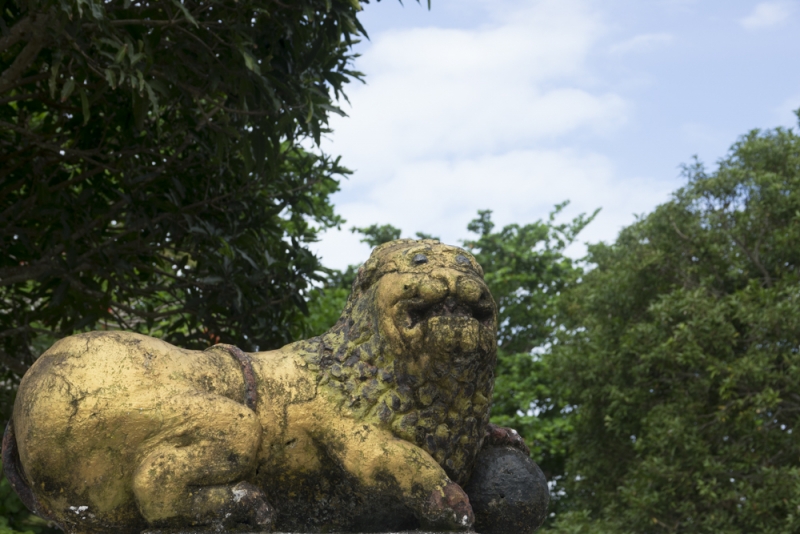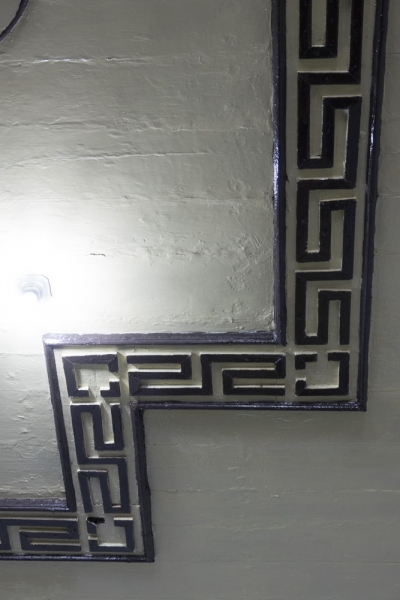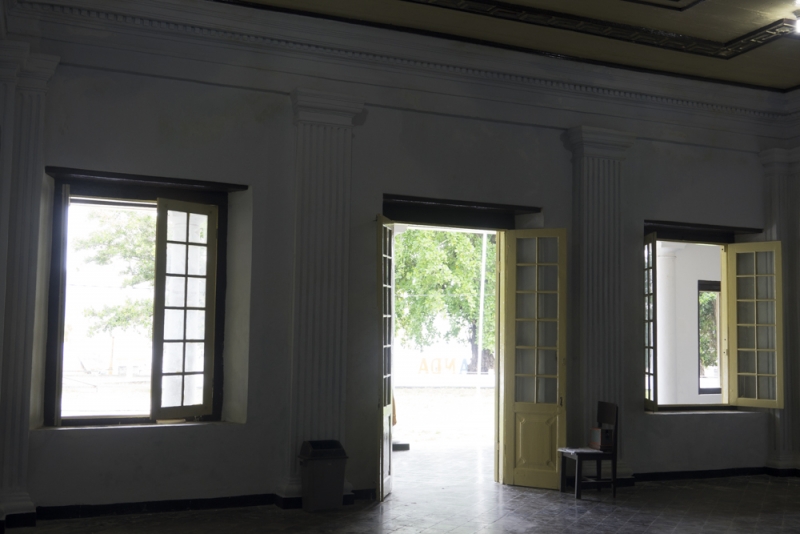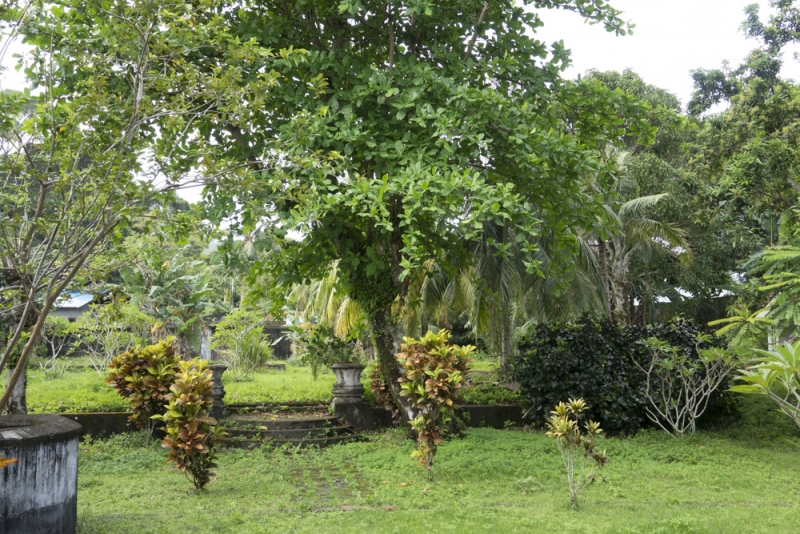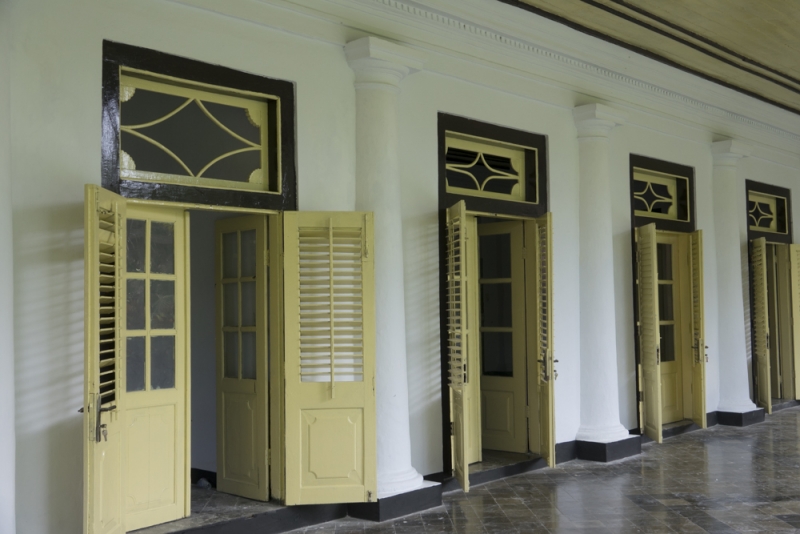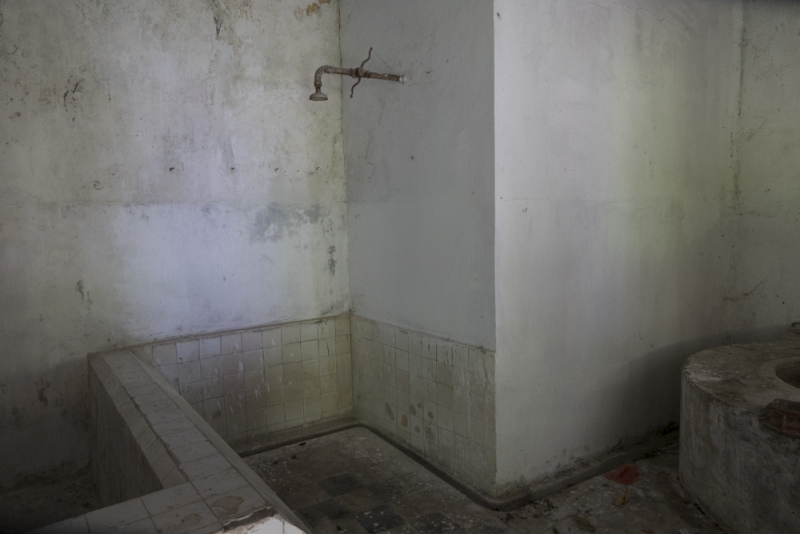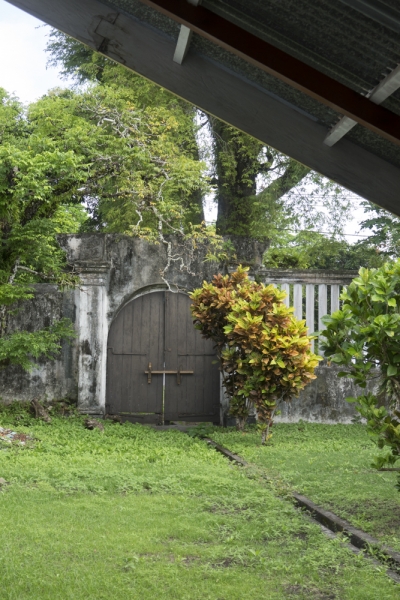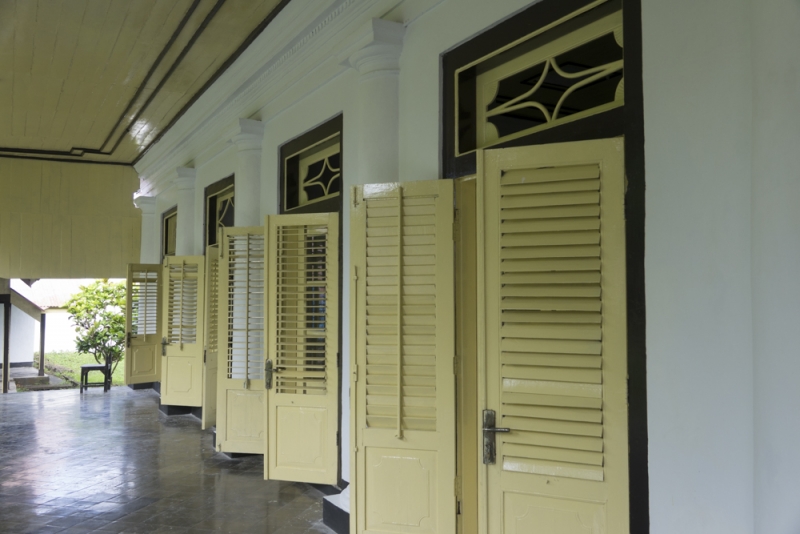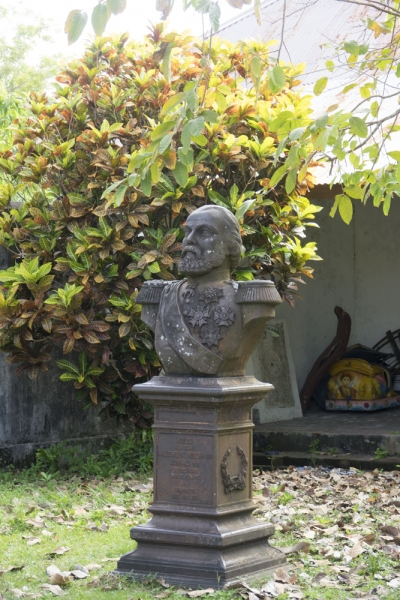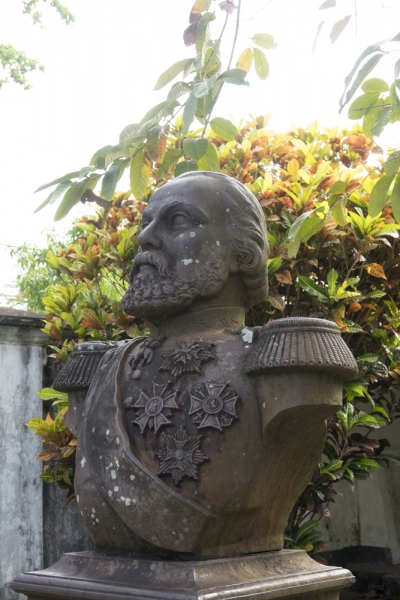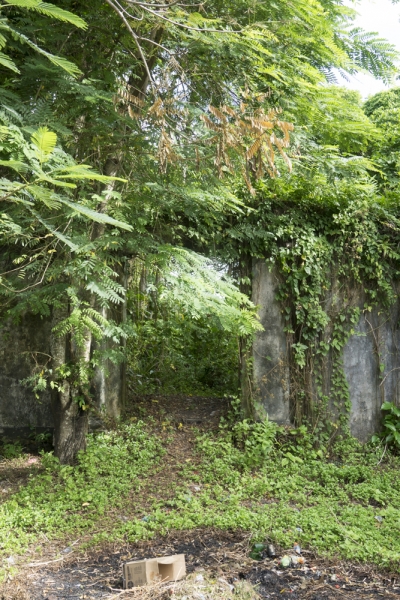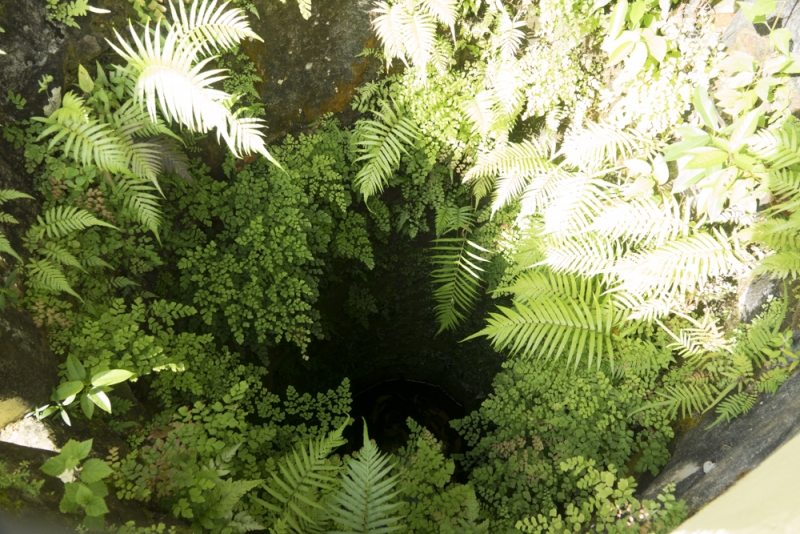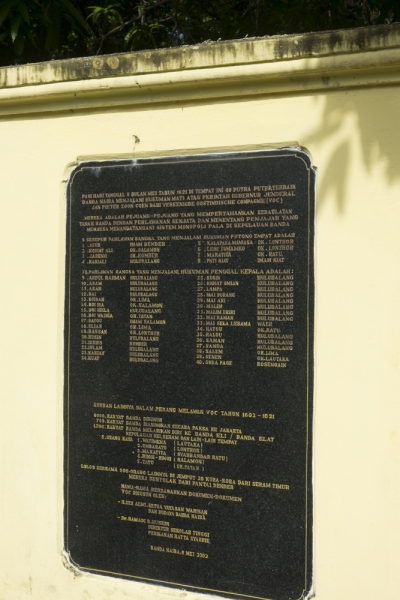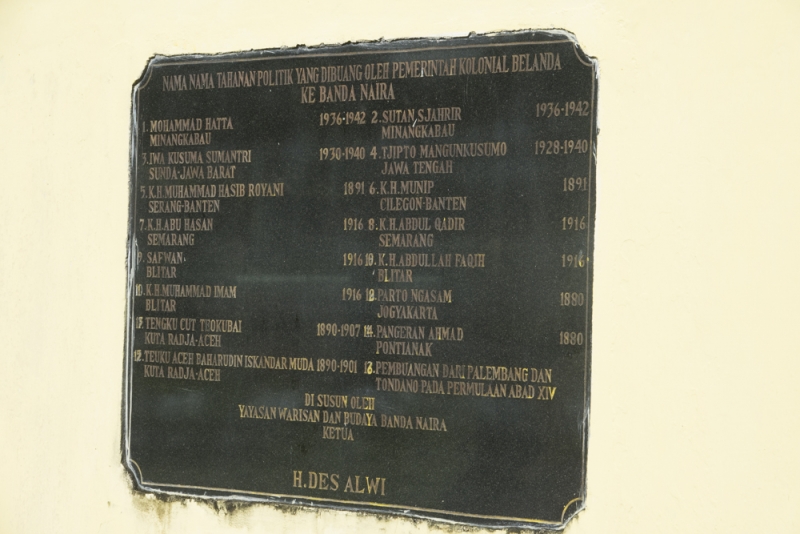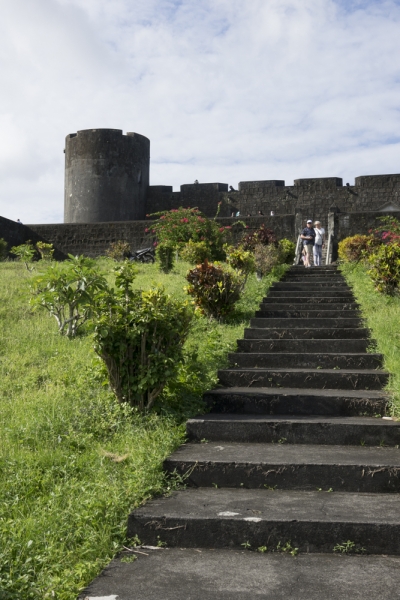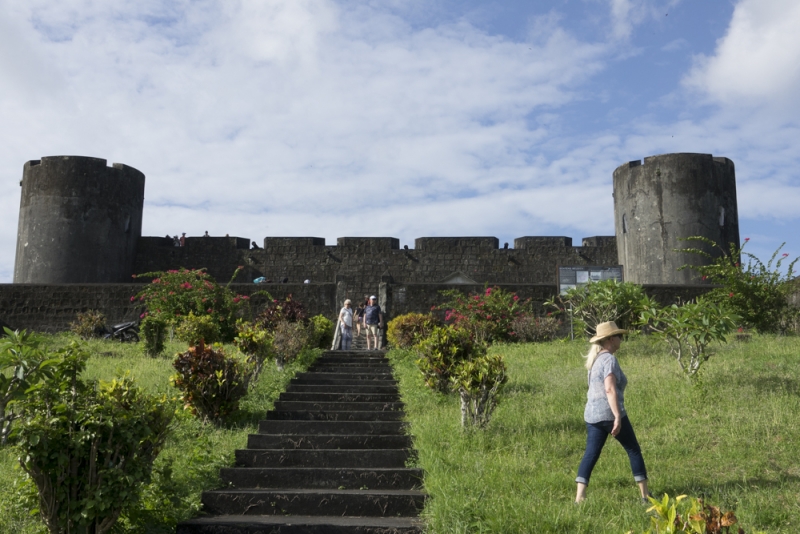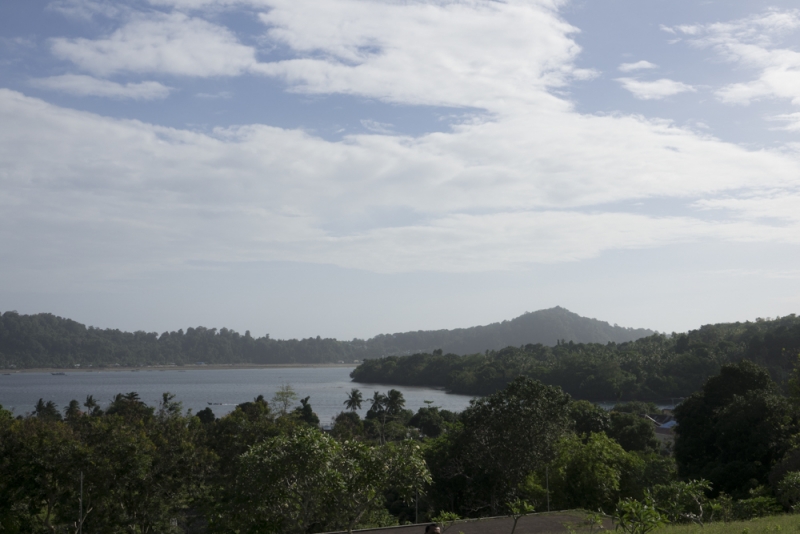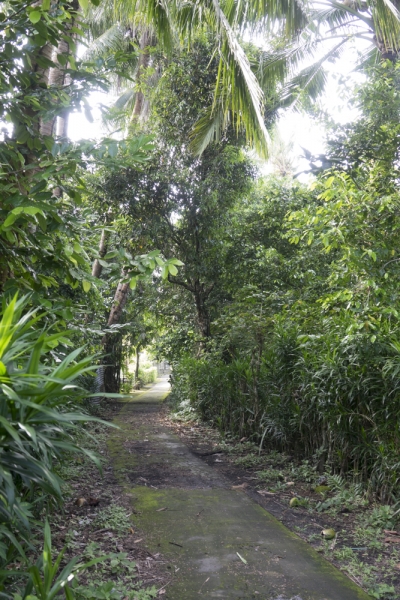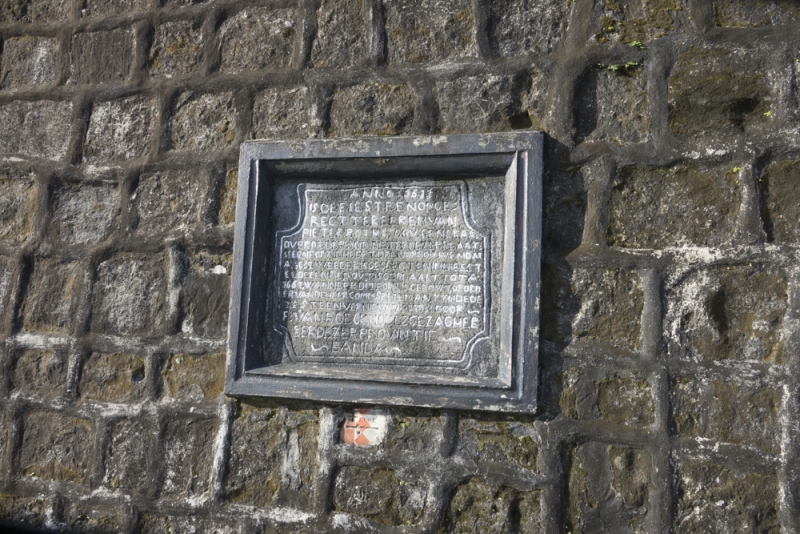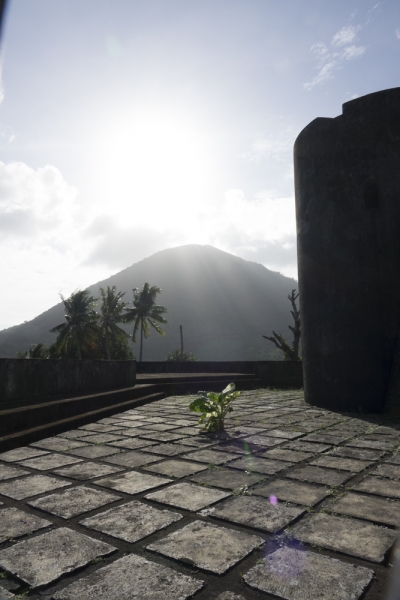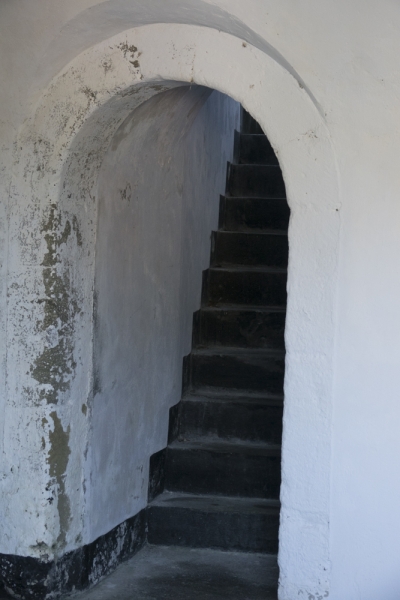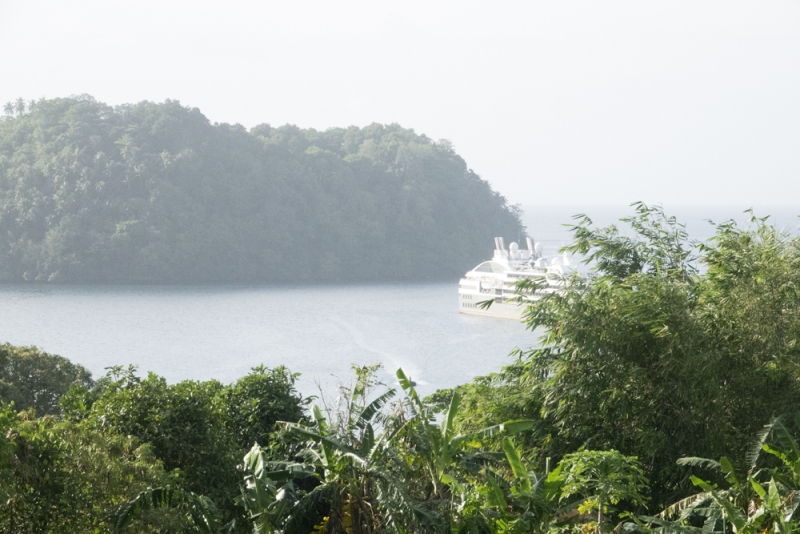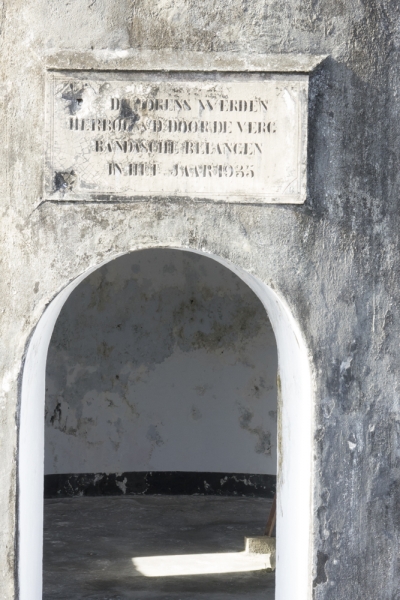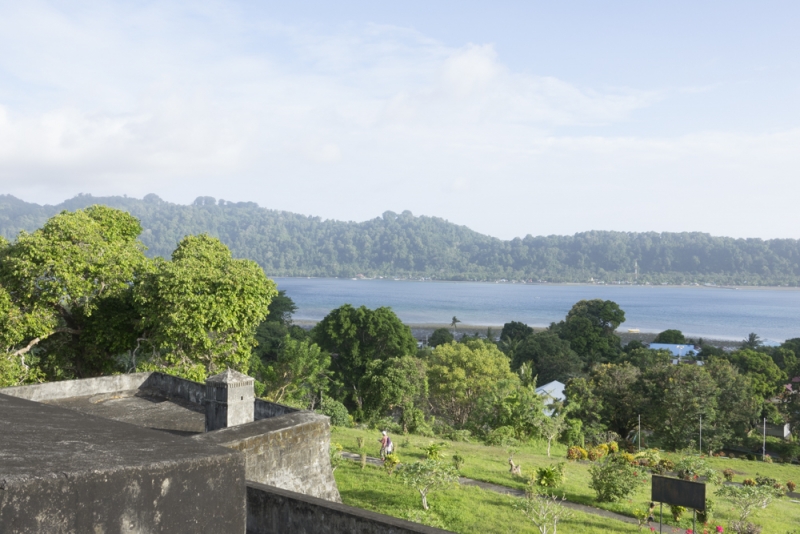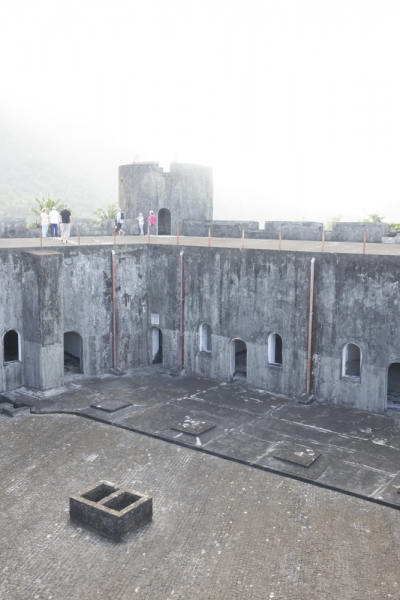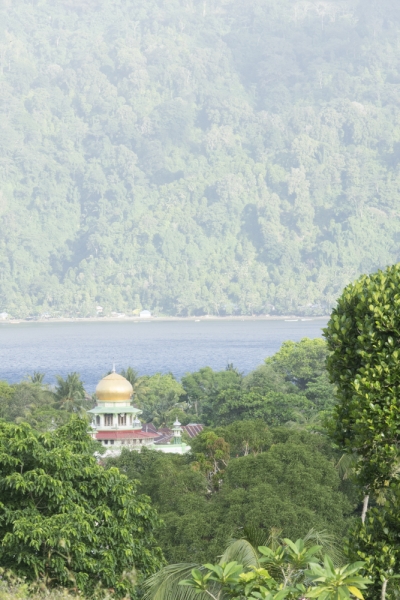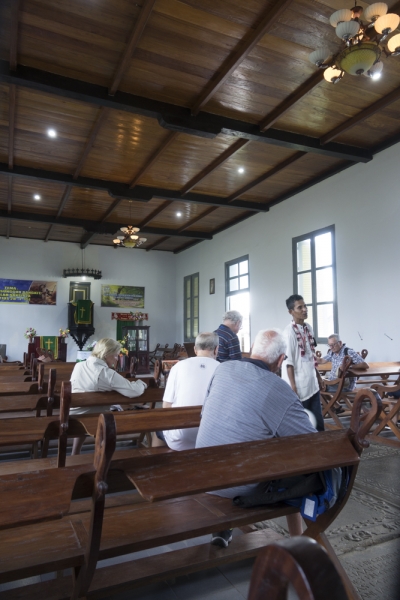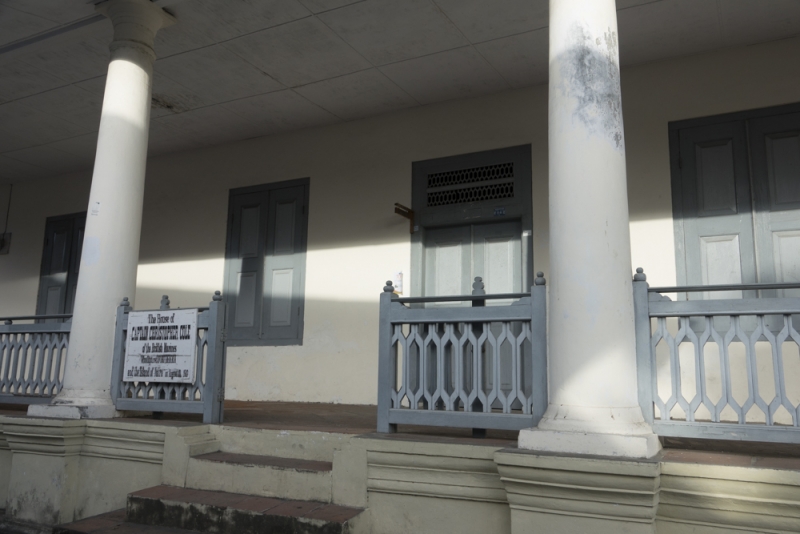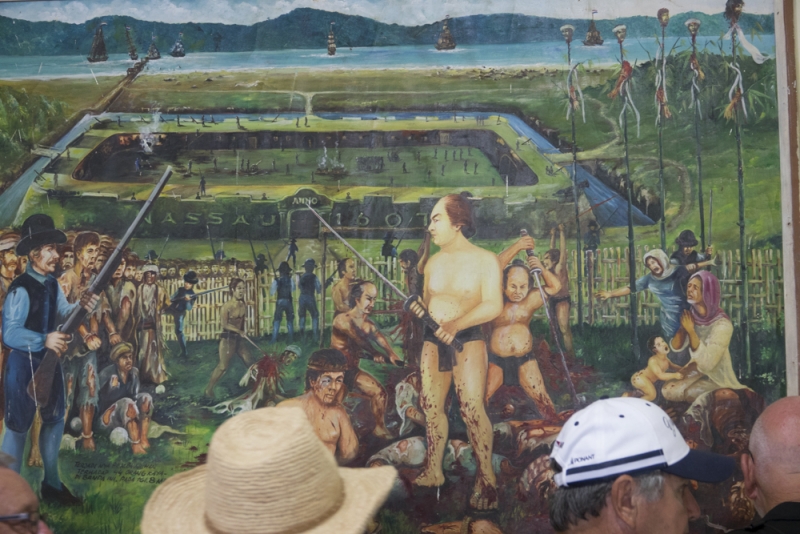Banda Neira (also spelt as Banda Naira) receives 5 cruise ships per year, so the arrival of L’Austral is a major social event for the residents. It is also L’Austral’s first visit to Banda Neira, so there is a formal welcome ceremony that starts with 35 or so ‘warriors’ paddling a long boat out to greet the ship, along with singing and chanting. What at first appears to be slapping of the water turns out to be some old fashioning bailing out of the boat by bucket.
After all of the passengers are on land, Captain Marchesseau arrives to greet the local chief, and the senior members of the village/town. This involves the exchange of plaques. The plaque from Banda Neira is a sculpture in the form of a large nutmeg pod, the traditional source of wealth for the community, and the subject of much brutalisation by the conquering Dutch and Portuguese in the seventeenth and eighteenth centuries. Ponant’s gift is an engraved plaque featuring L’Austral, and a t-shirt. Expedition leader Raphael receives a model of the ceremonial boat that greeted us, and the senior elder of the village also receives a plaque and t-shirt.
The exchange of plaques is followed by a performance of local dancers, telling the story of the harvest of nutmeg.
The local tour operator has arranged walking tours of the town, taking in the initial Portuguese Fort Nassau, and the later Fort Belgica established by the Dutch. This almost forgotten area of Indonesia was the only source of nutmeg and mace for nearly 400 years, with the colonial Portuguese and Dutch powers massacring the local population to control the spice trade. It was not until the British marine captain Christopher Cole liberated the Bandanese from the Dutch in the early nineteenth century.
The walk through the town passes an old, derelict Chinese temple, and proceeds to Fort Nassau.
The tunnel shown in the photos connects Fort Nassau to Fort Belgica, but is now impassable after the 1989 earthquake.
A walkthrough the ‘Harmony Society’ house, now only used for Independence Day functions, finds a statue of King Willem III of the Netherlands, and some interesting colonial architecture and a bathroom in dire need of renovation.
The history of brutal treatment by the colonial powers is memorialised at the ‘dead well’, where the heads of the local rich men executed by the Dutch in the 17th Century were thrown. The wall plaques commemorate the 6000 villagers massacred and other macabre events in the islands history.
Fort Belgica is the next stop on the walking tour, and is strategically positioned on the hill above the town, and is in good structural condition, with sweeping views.
Our last stop is the local church, servicing the minority Christian population in this Muslim country. It is also the burial place of one of the brutal Dutch dictators, Petr Verhoeven. We also walk past the home of Christopher Cole, the liberator of the island from the Dutch, and take a short tour through the local museum, where paintings depict the slaughter of the local population.
Everyone is back on board by nightfall, and L’Austral slowly moves out of the harbour towards our next destination, Ambon.

